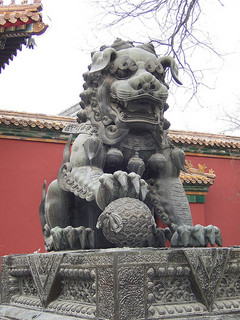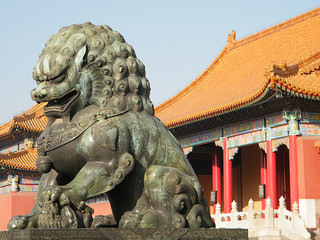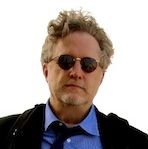Facing the Depths in Our Meditation Practice: Here Be Lions
 Last Sunday, I was sitting doing my meditation, and I noticed how my ego really wanted to avoid going deep. There was a strong signal: No, no, no. Let’s stay on top. Let’s think about anything rather than surrendering into the depths. I’ve noticed the same thing with my students and clients, that oftentimes there’s a real resistance to going deep. I think there are a couple of reasons for this. First, I think the ego intuitively understands that if you do go deep, you may encounter some things, or things may shift, or there may be some awakenings, and you will not be able to continue on a business-as-usual basis. Even if we’re depressed, or have addictive problems, or whatever it is, we’re comfortable with what we’re familiar with, with what is. Of course, that can get to the point where the suffering becomes so great that we reach out and we’re willing to do what it takes to get well. But there is certainly a fear of change.
Last Sunday, I was sitting doing my meditation, and I noticed how my ego really wanted to avoid going deep. There was a strong signal: No, no, no. Let’s stay on top. Let’s think about anything rather than surrendering into the depths. I’ve noticed the same thing with my students and clients, that oftentimes there’s a real resistance to going deep. I think there are a couple of reasons for this. First, I think the ego intuitively understands that if you do go deep, you may encounter some things, or things may shift, or there may be some awakenings, and you will not be able to continue on a business-as-usual basis. Even if we’re depressed, or have addictive problems, or whatever it is, we’re comfortable with what we’re familiar with, with what is. Of course, that can get to the point where the suffering becomes so great that we reach out and we’re willing to do what it takes to get well. But there is certainly a fear of change.
Second, our resistance to going deep can stem from traumatic things that have happened in our past. All of us have some trauma in our past; as the first noble truth of Buddhism says, “Life is suffering”—to be born is to suffer, to be incarnated is to suffer. Suffering happens. Stan Grof and company talk about how the very trauma of being born into the world starts us off with PTSD to a certain extent; we come from just floating in a blissful place connected to our mother, and all of a sudden we’re pushed through a small tube out into the world and there are all sorts of people around us, and what the heck is going on? That’s a whole, huge journey. Apparently, it can really seem like going from heaven into hell as the birth process happens—the contractions, being pushed through the birth canal, being pulled out, and then bam! We’re born into this new universe. This is a pattern, not only with physical birth, but also with spiritual and emotional birth.
We come from a certain level, and if we’re going to get to the next level of capacity, and be born to who and what we really are, it usually takes a “breaking,” or an “unmaking.” It usually takes a falling apart. For some of us, it might take a divorce, or death; it could be violence, or any number of things—depression, trauma, and so on. We have to deal with it and let ourselves be broken down. We have to get to the point where our old ways are not adequate, then go through a kind of dismembering, and finally come back at a new level of organization. This process can go on and on throughout our lifetime.
I have been using the St. Francis Prayer in my inner work for something like 10 years now. I make sure to say the prayer every time I do my inner work, and if I can’t get through it without getting distracted, I start over again. Anyway, the last part of it says, “And it is in dying that we are born to Eternal Life.” In my practice, I have found it useful to change this to read, “And it is in dying—again, and again, a nd again, and again—that we are re-born, and born, and born, again and again, to Eternal Life.” In other words, it’s not just a one-time process.
nd again, and again—that we are re-born, and born, and born, again and again, to Eternal Life.” In other words, it’s not just a one-time process.
Every time we go into meditation and let go of our egos, we surrender to the emptiness, to the depths of our own being, to that sacred whatever it is, the mystery in ourselves. This surrender is really a death to our personal agendas and conditioning, and if we do this on a regular basis, it is transformative. Sometimes we will have big, Ka-bang! Pow! sorts of experiences when we’re doing this process, but for most of us it seems to be a gradual awakening, a gradual affair with simply getting lighter; we become more translucent. It can also be a combination of both—we may have a big, dramatic awakening or opening, followed by a period of integrating it and working through our stuff. That’s what it has been like for me.
 So, we tend to resist going into the depths out of fear, or because we think we’re going to encounter dragons. In the old maps, Roman and medieval cartographers used to write “HIC SVNT LEONES” (in Latin), meaning “Here be lions.” This is how they referred to the unknown territory beyond the known world. That’s exactly what it’s like. You don’t know what you’re going to encounter down there. However, we do know that we’ll probably, and hopefully, encounter our pain, our hurt, and our traumas—sometimes individual, sometimes group—our family stuff, and sometimes the pain and the struggle of all sentient beings will come up to be embraced, to be held in our hearts, and allowed to do what it needs to do, and that opens spaciousness.
So, we tend to resist going into the depths out of fear, or because we think we’re going to encounter dragons. In the old maps, Roman and medieval cartographers used to write “HIC SVNT LEONES” (in Latin), meaning “Here be lions.” This is how they referred to the unknown territory beyond the known world. That’s exactly what it’s like. You don’t know what you’re going to encounter down there. However, we do know that we’ll probably, and hopefully, encounter our pain, our hurt, and our traumas—sometimes individual, sometimes group—our family stuff, and sometimes the pain and the struggle of all sentient beings will come up to be embraced, to be held in our hearts, and allowed to do what it needs to do, and that opens spaciousness.
The spaciousness we find is actually infinite. No pain can be too big—even the suffering of all beings everywhere, past, present, and future—for the vast spaciousness of our own original face, our own true nature. What, and who we’ve always been, we will always be.
So, our resistance is very interesting. I have found that in my own practice, when I don’t want to meditate—No, no, no, no. Not today!— it’s usually because there is something coming up from my unconscious that I don’t want to deal with. Something I have avoided doing, some pain, slight, hurt, or trauma that doesn’t want to be reckoned with. When you don’t want to meditate, don’t buy it. Meditate even more.
Photo credits. Tibetan Lion: mckaysavage via photopin cc; St. Francis profzucker via photopin cc; lion guarding temple: PictureWendy via photopin cc.
___________________________________________________________________________
Adapted from iAwake Technologies’ free, weekly teleconference call on February 6, 2013.
Join our weekly calls!
To receive information on how to join the weekly iAwake coaching calls that John leads, sign up for the free meditation download and you’ll be put on the email list. You can also access the phone-in information on our Teleseminar page.
___________________________________________________________________________
 John Dupuy is the CEO of iAwake Technologies and the founder of Integral Recovery, a holistic addiction treatment approach inspired by Ken Wilber’s Integral Model. As a pioneer in the use of brainwave entrainment in therapy and personal development, John has dedicated his life to helping others deepen their spiritual practice and transform their lives.
John Dupuy is the CEO of iAwake Technologies and the founder of Integral Recovery, a holistic addiction treatment approach inspired by Ken Wilber’s Integral Model. As a pioneer in the use of brainwave entrainment in therapy and personal development, John has dedicated his life to helping others deepen their spiritual practice and transform their lives.
___________________________________________________________________________
Leave a Comment
You must be logged in to post a comment.

Leave your comments below